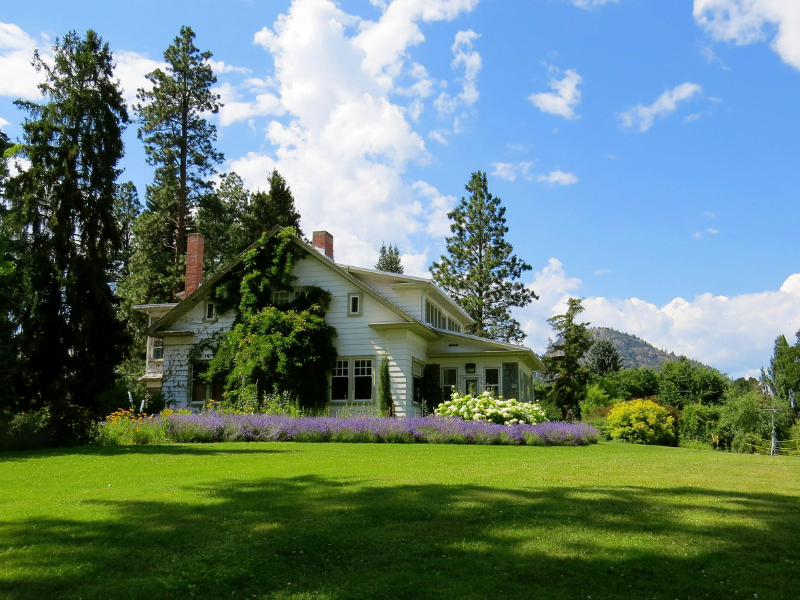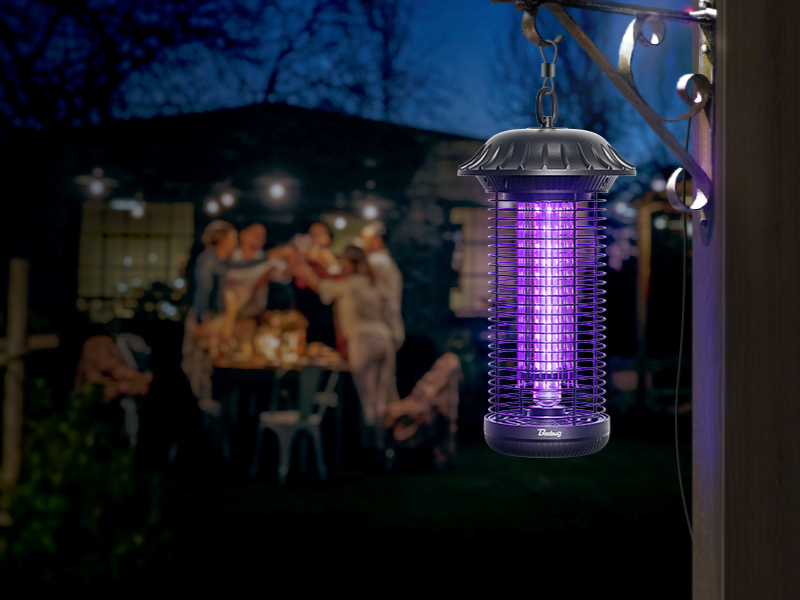A bug zapper is a fantastic defense against flying pests, but it’s not the only tool you should rely on. To truly keep mosquitoes and other bugs at bay, adding some DIY pest control solutions will give your zapper the backup it needs to create a comfortable, bug-free yard. Best of all, many of these methods are inexpensive, easy to implement, and eco-friendly.
1. Simple Yard Maintenance Tips to Reduce Bugs
Maintaining your yard is one of the simplest and most effective ways to reduce the number of bugs that invade your outdoor space. By following these practical tips, you’ll make your yard less inviting to pests like mosquitoes, flies, and gnats.

1.1 Keep the Grass Trimmed: Mosquitoes Love Tall Grass
Mosquitoes, flies, and other insects are drawn to tall grass because it provides cool, shaded areas where they can hide. If your lawn starts looking more like a jungle than a yard, you’re likely creating the perfect bug habitat. By keeping your grass trimmed regularly, you’re removing one of their favorite hiding spots and making your yard less inviting.
Make sure to mow the lawn at least once a week during the warmer months. This not only reduces the bug population but also helps your yard look neat and welcoming. If you’ve got any areas of tall weeds or untrimmed corners, pay special attention to those spots. Bugs love to lurk in out-of-the-way places, so make sure everything is neat and tidy. Your bug zapper will work better when there are fewer places for mosquitoes to escape!
By following these tips, you’ll help minimize mosquito hiding spots and enhance your bug zapper’s effectiveness.
1.2 Remove Standing Water: A Mosquito’s Favorite Breeding Ground
If there’s one thing mosquitoes love more than tall grass, it’s standing water. Even a small puddle in a plant pot or birdbath can become a mosquito breeding ground, leading to hundreds of new pests flying around your yard. To keep these bloodsuckers in check, it’s essential to eliminate standing water wherever possible.
Start by walking around your yard and looking for any areas where water tends to collect. Empty plant saucers, fix leaky outdoor faucets, and make sure your gutters are free of debris. If you have a birdbath or a water feature that you want to keep, just be sure to clean or refresh the water every few days. You can also add mosquito dunks—small, non-toxic tablets that kill mosquito larvae without harming birds or plants—to any water that needs to stay.
By removing standing water, you’ll be cutting off mosquitoes’ breeding ground and significantly reducing their population.
1.3 Clean Up Debris: Don’t Let Bugs Settle In
If you’ve got piles of leaves, twigs, or other yard debris lying around, you’re practically rolling out the red carpet for insects. Bugs love damp, dark spaces, and piles of yard debris offer the perfect shelter. To keep your yard as bug-free as possible, make it a habit to clean up any fallen leaves, sticks, or other debris regularly. You don’t need to spend hours raking every day, but a quick cleanup every week or so will make a big difference.
2. Creating Natural Bug Barriers with Essential Oils
Natural solutions, like essential oils, are great for creating invisible bug barriers around your yard. These oils not only smell great but also help repel mosquitoes, flies, and other pests.
2.1 DIY Bug Spray: Easy and Effective
A DIY essential oil bug spray is one of the easiest ways to create a natural bug barrier. This spray is perfect for spritzing around your seating areas, on patio furniture, or even on your skin. It’s chemical-free, safe, and takes just minutes to make.

Here’s a quick recipe to get you started:
- Fill a spray bottle halfway with water.
- Add 10-20 drops of essential oil (like citronella, lavender, peppermint, or eucalyptus).
- Add a splash of witch hazel or rubbing alcohol to help mix the oil with water.
- Shake well before each use.
This simple spray will create a natural barrier around you and your yard, keeping bugs from invading your space. Plus, you can reapply it as often as needed, especially during peak mosquito times in the early morning or evening. Just be sure to shake it before each use, as the oils and water will naturally separate over time.
2.2 Top Bug-Repelling Essential Oils to Try
Not all essential oils are created equal when it comes to repelling bugs, so it’s important to know which ones work best. Let’s take a quick look at some of the most effective bug-repelling oils you can use to keep your yard pest-free:
- Citronella: This is probably the most famous bug-repelling oil. Mosquitoes hate it, but it smells fresh and lemony to humans.
- Lavender: Not only does lavender smell calming, but it also repels mosquitoes, flies, and even moths.
- Peppermint: Bugs can’t stand the strong minty scent of peppermint oil. It works particularly well against ants and spiders too.
- Eucalyptus: This oil has a fresh, clean scent and is effective against mosquitoes and flies.
- Tea Tree Oil: Known for its antiseptic properties, tea tree oil also repels mosquitoes, flies, and other insects.
Mix and match these oils to create your own personalized bug-repelling formula. Always dilute essential oils properly if applying them to your skin by mixing with a carrier oil, like coconut or almond oil.
3. Add Bug-Repelling Plants to Your Yard
3.1 Why Bug-Repelling Plants Work
Plants don’t just look pretty—they have their own built-in defense systems against pests. Many plants produce strong scents and oils that bugs find unpleasant, which helps them survive in the wild. Luckily for us, we can harness those same properties to protect our outdoor spaces from insects like mosquitoes, flies, and gnats. By planting these bug-repelling powerhouses around your yard, you’ll create a natural barrier that keeps unwanted pests away without the need for harsh chemicals.
And the best part? You can plant these bug-busters anywhere! Whether it’s a small herb garden, flower beds around your patio, or pots near your outdoor seating areas, these plants will work their magic to keep the bugs at bay while adding color and fragrance to your space.
3.2 The Top Bug-Repelling Plants for Your Yard
Not sure where to start? Here’s a list of the top bug-repelling plants to consider for your yard:
- Citronella: This plant’s lemony scent confuses mosquitoes and is a must-have for any yard.
- Lavender: Repels mosquitoes and flies while adding calming beauty to your outdoor space.
- Marigolds: These colorful flowers repel mosquitoes, flies, and even aphids, making them perfect for vegetable gardens.
- Basil: This herb doubles as a mosquito repellent and a fresh addition to your kitchen!
- Peppermint: Keep ants, mosquitoes, and flies at bay with the refreshing scent of peppermint.
Plant these around your outdoor seating areas or garden beds for a beautiful and bug-free environment.
4. The Last Barrier: A Reliable Outdoor Pest Killer
While these natural solutions are highly effective, combining them with a powerful bug zapper can give you the ultimate bug-fighting edge. To complete your pest control system, use the Buzbug MO008C Outdoor Bug Zapper as the final defense against flying insects in your yard.

This zapper uses UV-LED technology to attract and eliminate mosquitoes, flies, and other insects with its high-powered electric grid. Equipped with energy-saving LED lights, it provides long-lasting performance while remaining environmentally friendly. The weatherproof design ensures it works reliably in any outdoor conditions, while the protective grid ensures safety by preventing accidental contact. Plus, the removable tray makes cleanup quick and hassle-free.
By combining regular yard maintenance, natural bug-repelling methods, and the Buzbug MO008C, you’ll create a comprehensive, effective pest control system that ensures your yard stays peaceful and bug-free.


